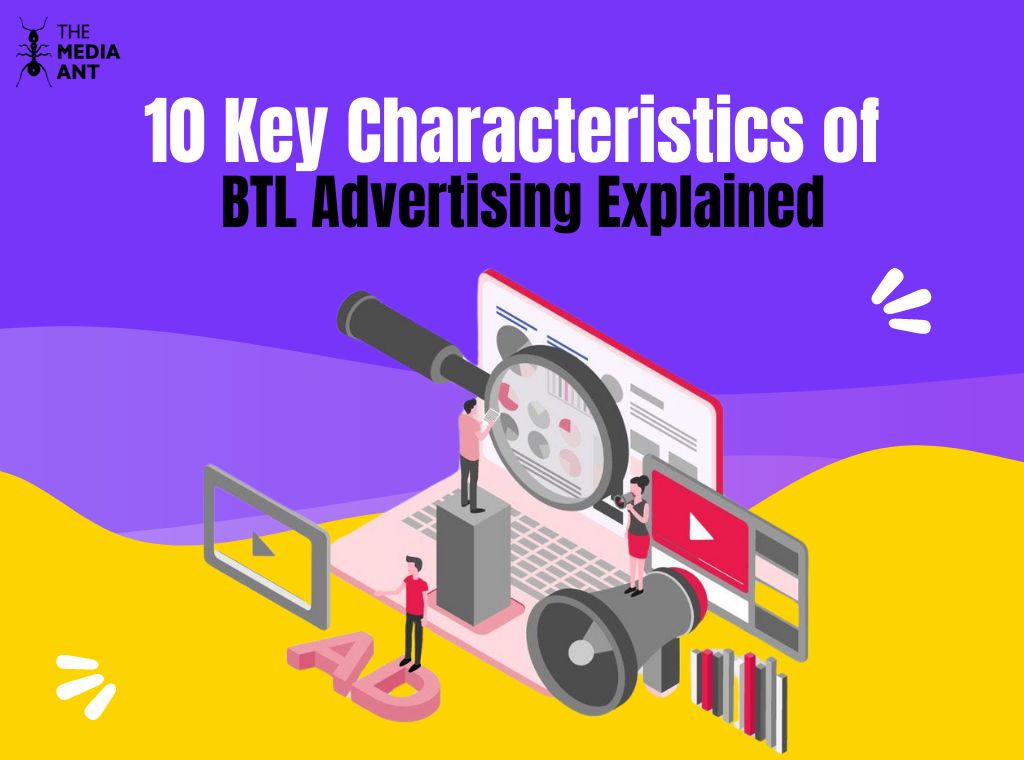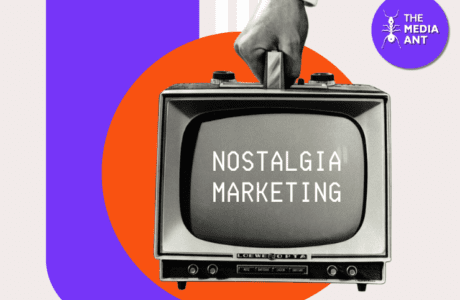BTL advertising, short for Below-the-Line advertising, is all about reaching specific customers with targeted messages. Instead of blasting out ads on TV or radio like traditional advertising (ATL – Above-the-Line), BTL focuses on getting up close and personal. Think email campaigns, social media engagement, or even loyalty programs. It’s all about building relationships and interactions with your target audience.
10 Key Characteristics of BTL Advertising
1. Targeted Audience
BTL (Below-The-Line) advertising is all about precision. Unlike broad-spectrum advertising, BTL hones in on specific demographics, ensuring that the marketing message hits the right audience. This targeted approach increases relevance and engagement, making every interaction count.
2. Cost-Effectiveness
BTL advertising shines when it comes to budget efficiency. Without the hefty price tags associated with traditional ATL (Above-The-Line) advertising, BTL strategies enable businesses to achieve substantial reach and impact without breaking the bank. This makes it an ideal choice for smaller businesses and startups.
3. Direct Consumer Interaction
The essence of BTL advertising lies in its ability to create direct and personal connections with consumers. Through methods like in-store promotions, product demonstrations, and experiential marketing events, brands can engage consumers face-to-face, creating memorable experiences that build stronger brand loyalty.
4. Measurable Results
One of the standout benefits of BTL advertising is its measurability. Utilizing tools like coupon codes, QR codes, and direct feedback mechanisms, businesses can track the effectiveness of their campaigns with precision. This data-driven approach allows for ongoing optimization and clear insights into ROI.
5. Customization and Flexibility
BTL advertising is highly adaptable. Campaigns can be customized to suit different market segments, allowing marketers to tailor their messages and tactics to specific consumer needs and preferences. This flexibility enhances the relevance and impact of marketing efforts.
6. Localized Reach
BTL campaigns often have a localized focus, targeting specific geographic areas or communities. This ensures that marketing efforts are not only relevant but also resonate deeply with the local audience, leading to higher levels of engagement and conversion.
7. Personalized Messaging
Personalization is a key strength of BTL advertising. Through channels like direct mail, email marketing, and SMS campaigns, brands can deliver tailored messages that speak directly to individual consumer interests and behaviors. This personal touch significantly boosts the likelihood of a positive response.
8. Engaging Content
BTL advertising thrives on creativity and engagement. Activities such as contests, giveaways, and interactive social media campaigns captivate consumers and encourage active participation. This engagement fosters a sense of community and enhances brand loyalty.
9. Stronger Customer Relationships
The direct and personal nature of BTL advertising helps build stronger, more lasting relationships with customers. By engaging consumers on a personal level, brands can foster deeper connections, leading to increased loyalty and repeat business.
10. Quick Adjustments
The agility of BTL advertising allows for rapid adjustments based on real-time feedback and performance metrics. This ability to pivot quickly ensures that campaigns remain effective and can be fine-tuned to respond to changing market dynamics or consumer preferences.
Conclusion
In conclusion, BTL advertising offers a targeted, cost-effective, and highly engaging approach to marketing. By leveraging these key characteristics, brands can create impactful campaigns that drive engagement, build strong customer relationships, and deliver measurable success.
Related Articles
FAQs Related to Characteristics of BTL Advertising
What are the objectives of BTL?
The objectives of BTL (Below-The-Line) advertising include reaching specific, relevant audiences with precision, fostering direct and personal consumer interactions, generating measurable and trackable results, increasing brand awareness among targeted groups, and achieving marketing goals cost-effectively within limited budgets.
What are the benefits of BTL marketing?
BTL marketing offers several benefits such as enhanced targeting of specific audience segments, lower costs compared to traditional advertising methods, opportunities for direct and personal consumer engagement, highly customizable campaigns tailored to specific market segments, and clear, measurable insights into campaign effectiveness.
What is BTL in advertising?
BTL (Below-The-Line) advertising refers to marketing activities that utilize non-traditional, direct approaches to reach consumers. These methods include direct mail, email marketing, in-store promotions, and experiential events, emphasizing personal interaction, precise targeting, and measurable outcomes, distinguishing it from mass media ATL (Above-The-Line) advertising.
What is BTL marketing examples?
Examples of BTL marketing include in-store promotions with special offers and product demos, direct mail campaigns with personalized letters or brochures, targeted and personalized email marketing campaigns, interactive experiential marketing events and pop-up stores, guerrilla street marketing tactics like flash mobs and giveaways, sampling campaigns distributing free product samples, and showcasing products at trade shows and exhibitions.






Cool article on BTL advertising! It breaks down the key features, like direct targeting and measurable results. Handy info for anyone in marketing.